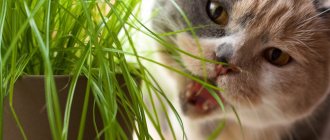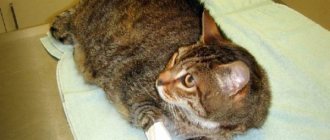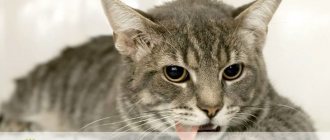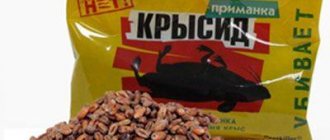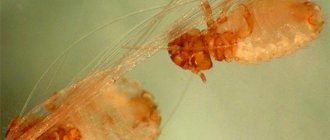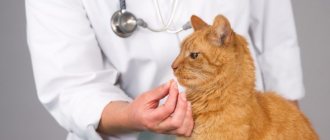Cats with gastrointestinal problems are among the most common patients in veterinary clinics. This makes them a constant concern for guardian cats. Digestive diseases have very characteristic signs and symptoms, but distinguishing between them is not always easy. This is because similar symptoms can be present in very different diseases, meaning veterinarians must be skilled in diagnosing them.
Although the causes of gastrointestinal disease in cats are varied, there are certain references that can give us a clue. Vomiting and diarrhea are the most obvious symptoms of indigestion, but we need to look at the accompanying symptoms to better understand the problem. If you see that your cat is not eating and is vomiting, this gives us an idea of what the problem may be.
The appearance of watery vomiting
An animal can vomit not only clear liquid. The water sometimes contains pieces of food, wool, bile, and blood.
In any case, the gag reflex is a reaction to nausea. The stomach tries to get rid of foreign objects, excess food, water. But these are not the only factors that make cats vomit.
Deep swallowing movements with rapid breathing that accompany vomiting are an instinctive manifestation of the body.
The brain center gives signals for such actions. He also first receives signals from the nerve endings affected by the problem that has arisen.
Thyroid problems
Problems with the thyroid gland cause a condition where cats may vomit liquid after drinking water. Hyperthyroidism is a hormonal disease caused by excess secretion of the thyroid gland. This clinical syndrome is difficult to detect. Your cat may also exhibit other symptoms, such as oily skin and fur, acne on the face, or excessive drooling. Thyroid problems can be controlled with special medications and a veterinarian-prescribed diet.
© shutterstock
Possible reasons
A pet can vomit for any reason (just like a person).
The main factors are classified into the following groups:
- physiological characteristics;
- poisoning and infections;
- internal illnesses.
The first group can be considered the most harmless - vomiting is short-term. Other reasons provoke prolonged nausea. And this is already a reason to start treating your pet.
Physiological prerequisites
Vomiting can occur due to the anatomical structure of the cat's stomach. But in most cases, physiological manifestations are associated with other factors.
| Factors | Peculiarities |
| Hairballs | Sometimes cats themselves provoke vomiting by eating grass. This is necessary to remove from the stomach the hairballs that have accumulated there when combing out with the tongue. |
| Binge eating | The nerve receptors in the stomach are sensitive to excessive pressure from excess food. What the body is unable to process is rejected back, so there will be pieces of food in the vomit. |
| Quick swallowing | A hungry cat sometimes swallows food without chewing it. The digestive system does not have time to adjust to the process and pushes out food along with water |
| Pregnancy | In the morning, a cat may feel sick due to symptoms of pregnancy toxicosis. The expectant mother does not have time to eat, so she mostly vomits clear liquid |
| Motion sickness | Cats have problems with the vestibular system. It is not surprising that a pet may vomit clear liquid during (or after) driving a car. |
Sometimes pets drink a lot of water because they are thirsty, if, for example, they have eaten the “wrong” food - smoked, spicy, salty.
A foreign object or plastic wrapper from sausage may become lodged in the stomach. Then the animal deliberately drinks a large amount of liquid in order to deliberately provoke vomiting.
Diseases
If a cat vomits systematically, and the situation is not related to physiology, you need to look for the problem inside the body. There are a number of serious diseases that cause pets to vomit (and not just water).
| Name | Peculiarities | Symptoms |
| Hyperthyroidism | Cats have problems with the thyroid gland, and it’s difficult to detect. | Nausea is accompanied by increased salivation, rashes on the face, and greasy fur. |
| Pancreatitis | The disease develops due to improper feeding. Vomiting is usually caused by severe attacks of pain | The cat is in a tense position and does not allow anyone to touch its stomach. Vomiting may be accompanied by loose stools |
| Gastritis | The urge appears on an empty stomach in the morning. The cause is irritation of the gastric mucosa | The rejected water contains white foam |
| Liver problems | Your cat vomits frequently, regardless of food intake. | The animal vomits not clean water: the liquid contains bile |
| Oncology | Cancer in cats appears in adulthood. If a neoplasm appears in the stomach, the animal stops eating and vomits a clear liquid. Nausea is also caused by a tumor localized in the brain | Blood clots may be seen in the vomit. Due to lack of appetite, your pet loses weight. Vomiting water is accompanied by diarrhea |
If your pet is vomiting continuously, and after water comes out undigested food, then bile, and all this is accompanied by a foul odor, there is a suspicion of intestinal obstruction.
A cat can also vomit due to inflammatory processes in the uterus, kidney disease, and ear disease.
Common Causes
In addition to diseases of the internal organs, there are other factors that cause nausea in an animal:
- a cat vomits when poisoned by a low-quality or harmful product;
- the cause of vomiting due to toxins missing from the body may be plants containing alkaloids;
- the animal fell ill with panleukopenia, having picked up a deadly virus;
- helminths can cause intoxication.
In case of food infections and poisoning, the cat vomits large amounts of water mixed with bile, undigested food, and foam.
The animal is in a depressed state and takes unnatural poses. Symptoms often include diarrhea with a strong unpleasant odor.
Why doesn't my cat eat and vomit?
When your cat begins to vomit constantly, there is a high chance of loss of appetite. It is also possible that your cat may lose its appetite without vomiting. If the cat is not taking any medications at this time, it is likely that food refusal will be part of the clinical picture. Lack of appetite (loss of appetite) is something that needs to be addressed in any animal. This is especially important in cats due to their sensitivity and possible liver damage.
© shutterstock
Many factors can lead to gradual or sudden loss of appetite in a cat. However, if we see our cat vomiting at the same time as losing her appetite, this is a sure sign of a problem. If your cat is vomiting and has not eaten for more than 24 hours, you will need to consult a veterinarian.
When your cat is taken to the vet, they will run various diagnostic tests to determine the underlying cause. They will check to see if the cat is experiencing any discomfort or pain, perform a physical examination to see if they can find any inflammation, and ask about the context of their condition, such as whether they have lost their appetite.
The most common causes of vomiting and lack of appetite in cats are::
- Diet : Cat owners often come to the veterinarian's office with a pet that is vomiting regularly. If the loss of appetite is also persistent, one of the most common causes is malnutrition. This may be because your cat has specific nutritional needs that are not met by the food you buy.
- Foreign bodies : Sometimes a foreign body or object can block the digestive tract. This means that the food that goes down cannot be digested and comes back up. The reason for swallowing a foreign object could be because they accidentally ate something they shouldn't eat, or because the dead hair they lick from their body clumps together into a hairball.
- Eating frequency : Not all animals have the same eating habits. The caregiver needs to know how much an individual cat will require in terms of food quality and quantity. One problem that can cause a cat to vomit and not eat is feeding them too much in one sitting. Cats usually regulate their intake, but it is possible that they will eat too much and then be unable to eat or even vomit.
- Gastritis : This is an inflammation of the stomach that can occur both during prolonged fasting and when eating low-quality food. In these cases, we will need to check their diet to make sure it meets all of the cat's nutritional needs. It is better to give cats with gastritis smaller amounts of food more often. This is partly because when a cat waits for food, it produces stomach acid, which can make gastritis worse.
- Pancreatitis : The pancreas produces enzymes needed for digestion. When this function is impaired, the feline's quality of life is markedly reduced. One of the characteristic signs of pancreatitis is persistent vomiting and loss of appetite.
- Parasitosis : Among many symptoms, parasite infestation can cause vomiting and loss of appetite. Diarrhea is also a common symptom. There are many different types of internal parasites in cats that act in different ways. They can also be the cause of gastritis described above.
- Neoplasm : This is any type of abnormal growth caused by improper cell replication. This can take many forms, including tumors, both malignant and benign. As a result, cats vomit and often experience loss of appetite due to the blockage caused by the growth.
© shutterstock
There are other pathologies that are not closely related to the digestive tract and which can cause a cat to vomit and refuse to eat, for example:
- Feline leukemia virus
- Feline immunodeficiency virus
- Feline hyperthyroidism
- Feline infectious peritonitis
- Liver lipidosis
- Kidney failure
How to help an animal
Before starting treatment, you need to make sure that the vomiting is caused by a serious reason. If there are hairballs in the vomit and nausea was an isolated incident, you can do nothing.
When a cat vomits after eating, you need to examine the contents of the mass. If there is undigested food there, then this is most likely physiology, and not problems with the intestines. But if concomitant symptoms are added to vomiting water, then therapeutic measures should be taken or contact a veterinarian.
Drugs
Medicines are selected depending on the cause of vomiting in the animal:
- If there is a suspicion of poisoning, it is recommended to dilute Enterosgel (Atoxil) at the rate of 2 ml per 1 kg of pet’s body weight.
- When vomiting on an empty stomach with foamy water, it is recommended to give Almagel.
- If vomiting is not severe, you can use Regidron.
- For frequently recurring urges, an intramuscular injection of No-shpa or Cerucal is given (0.1 ml per 1 kg of weight).
In cases where the cat is not very tense and the accompanying symptoms are not very pronounced, you can use traditional methods of treatment.
Folk remedies
An alternative to drug therapy are folk remedies:
- In case of intoxication, it is recommended to give the cat a large amount of liquid to provoke additional vomiting.
- Give your pet 1 tbsp several times a day. decoction of flaxseeds or chamomile infusion.
During the first hours, the cat is not fed, then it is switched to a gentle diet - boiled rice with lean chicken or special food (in small portions). Habitual food is introduced gradually .
Symptoms signaling disease
Vomiting is a symptom of many pet illnesses . The nature of the masses and their composition differs depending on the type of pathology.
Appearance of white foam
Vomiting is a sign of many diseases in pets.
The appearance of white foam is not always dangerous. This phenomenon is often observed in hungry pets. Long intervals between meals contribute to the fact that the empty stomach begins to produce mucus, which suppresses gastric juice. A mixture of juice, mucus and air forms such foam.
If white foam appears often enough, then there is a high probability of stomach disease.
Vomit with bile
Bile is a yellow-colored impurity in vomit. It causes nausea due to stomach irritation. In isolated cases, the appearance of bile indicates high fat content of food or swallowing large pieces.
Frequent vomiting with bile signals the development of diseases of the liver, pancreas or intestines.
Vomiting food
The appearance of masses of undigested food indicates that the pet is overeating or swallowing too large pieces. The attack appears once.
If this phenomenon is repeated frequently, then there is a likely risk of developing stomach diseases (ulcers, gastritis or colitis). A sick stomach cannot cope with the digestion of food and becomes empty.
Blood impurities
The appearance of blood is a dangerous sign and requires immediate medical attention.
Be sure to read:
A cat has diarrhea and vomiting: what to do at home, reasons, what can be given, what to feed
The appearance of masses of undigested food indicates that the pet is overeating or swallowing too large pieces
In this case, there may be two options:
- Impurities of a bright scarlet hue indicate the presence of open wounds in the oral cavity or esophagus.
- Brown impurities appear when there are wounds in the stomach or intestines.
Factors that cause the appearance of wounds may include the ingress of foreign objects, the development of an ulcer or tumor, liver or intestinal diseases.
Treatment of vomiting in kittens
In small pets, the digestive system is not fully formed, so vomiting can be caused by dysfunction of the sphincter, which does not allow the stomach to empty normally.
Regurgitation can also occur for another reason: pathology of the muscle located between the esophagus and the stomach. With this diagnosis, the kitten is given only pureed food in small portions.
Avoid and treat vomiting with white foam
After identifying the most common reasons why a cat vomits white foam, we will see some recommendations on what we can do to prevent this situation and how to deal with this situation. These are the following:
- Vomiting is a symptom that should not be left untreated by contacting our veterinarian.
- It is recommended that you write down the symptoms we observe. In case of vomiting, you should look at its composition and frequency. This will help the veterinarian make a diagnosis.
- We must provide our cat with an adequate diet to meet her nutritional needs, avoiding foods that may make her feel unwell or trigger an allergic reaction.
- We must also store it in a safe environment to prevent it from being ingested by a potentially dangerous item.
- Regarding hairballs, brush your cat, especially during shedding season, as this will help get rid of all the dead hair that is about to fall out.
- It is important to keep a calendar of internal and external deworming, even if the cat does not have access to the outside. Our veterinarian will give us the most appropriate recommendations based on our circumstances.
- If a cat has vomited once and is in good spirits, we can wait and watch before contacting the vet. On the contrary, if the vomiting recurs, we see other symptoms, or our cat is decomposed, we should go straight to the vet without trying to treat it ourselves.
- Finally, from the age of 6-7 years, it is convenient that at least once a year we take our cat to the veterinary clinic for a full examination, including analytics. This is justified because with such control, some of the diseases we have talked about can be diagnosed at an early stage, which allows us to begin treatment before the first symptoms appear.
Natural Causes of White Vomit
The gag reflex and the secretion of white foam in animals are an important defense mechanism against environmental factors, allowing them to get rid of unnecessary and harmful contents of their stomach.
A cat vomiting white foam – causes:
- Wool . Cats belong to the category of clean animals that often lick their skin and keep it neat. Over time, a whole ball of fur accumulates in the animal’s stomach, which provokes foam from the mouth and white vomit. It is recommended that pets with long and thick hair be given special medications (grass, tablets and pastes) to improve the removal of the hairball from the stomach, otherwise health problems cannot be avoided.
- Feed _ It happens that a cat vomits white foam after he has eaten dry food. This happens because dry food swells greatly in the stomach, and it rejects excess food. Dry feeding for cats always requires clean drinking water nearby.
- Hunger . The cat breed is sensitive to lack of food; their digestive system will synthesize all the necessary enzymes and secretions, even if the cat has been hungry for several days. The hydrochloric acid of the gastric juice irritates the mucous membranes of the organs and digestive sections - hence the white foam with vomiting. Your pet shouldn't go hungry!
- Binge eating . Some pets are unable to control the amount of food they eat, so they overeat, then white foam leaves the mouth and a gag reflex occurs due to the excess of undigested food. Swallowing food too quickly without sufficiently chewing chunks and lumps of food can also result in it being rejected from the stomach through the mouth and nose. A distinctive feature of this condition is the presence of pieces of food, white foam and mucus in the vomit.
- Foreign body . Cats are curious and need to taste everything. A pet can swallow any household item, followed by white foam and active vomiting, after which the animal becomes the same – cheerful, affectionate and playful. It’s worse if the pet has eaten or licked medications, chemicals, poisonous or poisonous substances, then unpleasant consequences cannot be avoided.
- Pregnancy . Cats, like women, always feel sick and vomit in the early stages of pregnancy. This is the result of changes in hormonal levels, which is considered normal, and therefore should not cause unnecessary concern to the owners. The gag reflex with white foam can also occur in the last stage of pregnancy, this is due to the voluminous uterus and its pressure on the cat’s digestive organs.
- In heat . Every living creature has an instinct for procreation, and the cat breed is no exception. On average, they come into heat 3-4 times a year, and the animal is distinguished by special behavior. The estrus stage of estrus may be accompanied by nausea, foaming and white vomit.
- Medicines . A pet may react with white foam after taking medications that are prescribed to animals by veterinarians during illnesses and for their prevention. White foam may occur in your pet after taking strong antibiotics. White vomiting can also be caused by Duphalac, which is recommended for animals as a laxative for constipation. A cat may also vomit with white foam from deworming medications.
- Stress . Poor health and nausea can occur against the background of an imbalance in the pet’s psychological state. Fear, changes in living conditions, excitement and other stressful situations in an animal can lead to nausea and vomiting.
© shutterstock
Attention! To avoid the nausea reflex from dry food, alternate it with natural food, periodically change the type of food and always leave fresh water for your pet.
